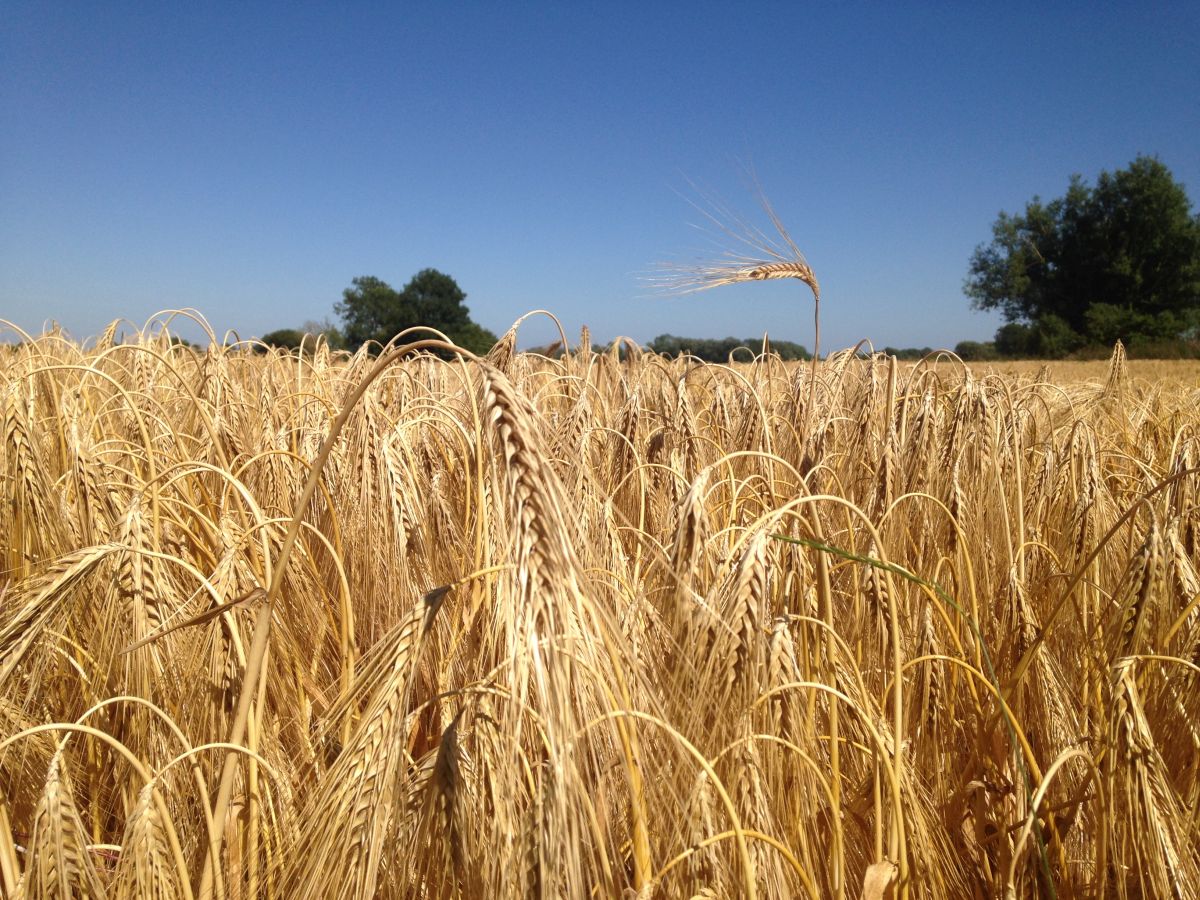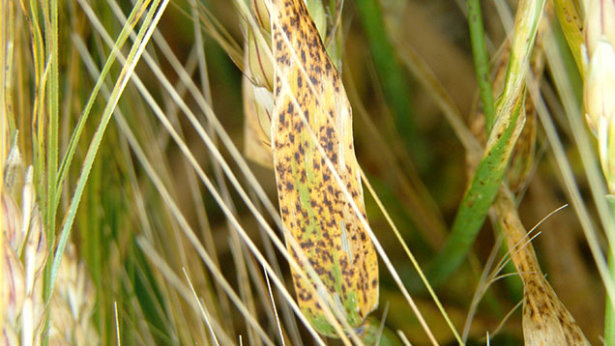
A team of scientists studying fungus in barley, which has caused farmers yields and quality to decline, have now sequenced and explored its genome.
Since the late 1990s, UK farmers growing barley have seen the yields and quality of their harvests hurt by an emerging disease called Ramularia leaf spot.
The disease is caused by the pathogenic fungus Ramularia collo-cygni.
Now a team of scientists studying this fungus have sequenced and explored its genome.
Their work helps to illuminate how the fungus causes disease in barley, and enables future studies to investigate why Ramularia leaf spot has become a threat to barley production and a serious economic problem.

The scientists performed the work at Scotland’s Rural College (SRUC), the University of Edinburgh's Institute of Evolutionary Biology and Edinburgh Genomics facility, and Rothamsted Research.
The fungus Ramularia collo-cygni can live between the cells inside of barley plants without causing symptoms for many weeks.
However, when conditions change inside the plant, the fungus becomes aggressive.
It secretes plant toxins that produce brown, rectangular lesions within a yellow ring, which are visible on both sides of the leaves.
The leaves die prematurely, reducing photosynthesis, and causing yield losses of up to 70 percent.
Toxic chemicals and proteins

How the fungus makes these toxins, and the role the toxins play in colonising the plants, remain largely unknown.
But the new study has identified a large number of genes involved in secreting potentially toxic chemicals and proteins.
The recent emergence of the disease as a major problem for barley-growers may be due to recent genetic changes to the fungus or to barley plants, or mary result from other changes to farming practice.
UK farmers produce about 7.3 million tonnes of barley each year, worth around £1 billion.
Roughly a quarter of the barley is used to produce beers, whiskeys and other drinks, and the remainder is predominantly used as animal feed.
Complex arsenal of toxins
Professor Kim Hammond-Kosack, a senior scientist at Rothamsted Research and one of the study’s authors, said: "It is probable that this fungus produces a complex arsenal of toxins to help it to colonise barley plants.
"By studying the expression of genes at different stages of the life of the fungus and in various environmental scenarios, we may be able to discover toxins that we don’t yet know about, and find out more about the mechanisms that regulate the formation of disease symptoms."
The genome also supports current ideas about how the fungus evolved.
The scientists confirmed the classification of the fungus within the same group as other plant pathogens, and as a close relative of Zymoseptoria tritici, the cause of Septoria tritici (leaf) blotch in wheat.
They found common genes thought to play a role in concealing the fungus from the plant’s immune system.
UK's second most common crop after wheat
Dr Jason Rudd, a senior scientist at Rothamsted Research and another of the study’s authors added: "Barley is the UK’s second most common crop after wheat.
"Ramularia leaf spot has big consequences for farmers here as well as in other important barley growing regions across Europe and South America.
"The large overall similarity in the genome sequences between Ramularia and Zymoseptoria suggests they may both be open to a common future disease-prevention strategy.
"The bits which differ will most probably explain why they are particular for barley and wheat crops, respectively.
"We hope our data will provide the foundation for scientists to try new approaches to treating these diseases."
